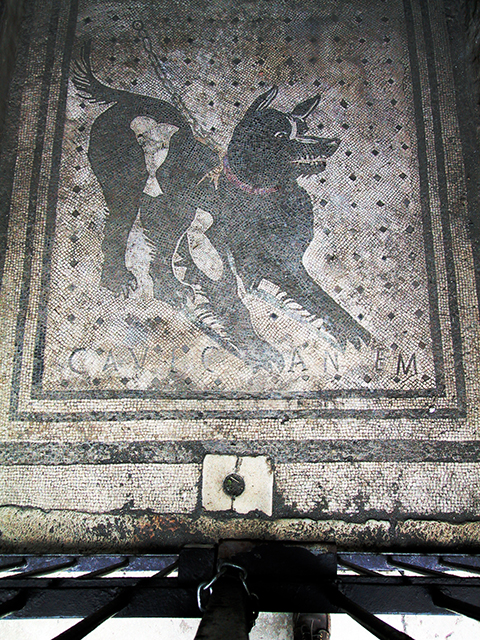
In actual fact the Satyricon is not so much a critique of luxury per se but of the aspirations of the lower classes to acquire a debased version of it. Its author is thought to have been Nero’s arbiter of elegance and, as such, did not espouse luxury, but merely its ‘tasteless’ and ‘vulgar’ acquisition by nouveau riche freedman such as Trimalchio. Wallace-Hadrill makes a similar point with regard to the writings of Cicero and Pliny when he points out that they criticised luxury from a moral standpoint in order to covertly reinforce class divisions (Wallace-Hadrill 1990:147). This in itself indicates that the consumption of luxury by the lower classes had spread to such an extent that class distinctions, previously based on property and wealth, were no longer appropriate or effective. This in its turn makes the polemical use of the word luxury problematical. If, after all, large numbers of people had wall-paintings and mosaic floors, they can no longer be classed as luxury items because, to use a modern phrase, they had become standard fittings. It is also worth noting that the list of luxury items complied by Horace makes no reference to wall-paintings. (Ep. 2.2.180-2.)
John D’Arms in Commerce and Social Trading in Ancient Rome, 1981, whilst critical of the eminent Roman social historian Michael Rostovtzeff’s use of Trimalchio to characterise a ‘typical’ Roman, he nevertheless cited the fictional character some one-hundred and fourteen times, in comparison with the historical figure of C. Sempronius Rufus, who appears only twenty-five times. Is this a case of fiction upstaging reality?
More recent socially orientated historians of ancient Rome have used the social and economic frameworks created by people such as Rostovzteff and D’Arms in order to socially position the wall-paintings and in some cases to critique them on moral and ethical grounds, whilst the ever present shadow of Trimalchio lurks in the background. In Paul Zanker’s Pompeii - Public and Private Life Trimalchio is very much the elephant in the room, finally appearing on the penultimate page in order to summarise the book’s thesis that Pompeii was overrun by the nouveau riche middle class, who attempted to mimic palatial aristocratic luxury in their domestic environments. Despite being described as ‘…Petronius’ grandiose, overblown character’ he is nevertheless used to define the prototypical Roman ‘independent freedman’. (Zanker 2000: 201-2)
Luxury and Decadence
Historians who position the wall-paintings within theoretical frameworks governed by terms such as ‘luxury’ invariably never qualify its meaning, either in relative or absolute terms. An extreme case in point is Zanker’s book, cited above, which uses the word extensively without ever defining it. In the annexe to this chapter this publication is used as a case study to illustrate the problematical use of wall-painting to evidence sociological theories. Andrew Wallace-Hadrill in ‘The Social Spread of Roman Luxury’, highlights the need for a definition and indeed attempts to provide one (Wallace-Hadrill 1990:148-149). However, given the pivotal role that the concept of luxury plays in the text it does not seem sufficient.

Cave Canem, mosaic, Casa del Poeta Tragico, Pompeii
The Satirycon makes no reference to paintings as indicators of luxury, on the contrary on occasions it bemoans the fact that ancient paintings were not cared for and often left to fade away. Ironically, the most descriptive references to a wall-painting involves the main protagonist being frightened by the apotropaic image of a dog painted on a wall in the entrance to Trimalchio’s house. (Chapter 29, Eng. trans Firebaugh, G. Project Gutenberg, 2006[EBook #5225]) The CAVE CANEM mosaic in the entrance to the Casa del Poeta Tragico performed a similar function and its dramatic presence, amongst other things, prompted Bulwer-Lytton to use this house as the model for his hero’s house in his melodramatic novel The Last Days of Pompeii (1834).
|